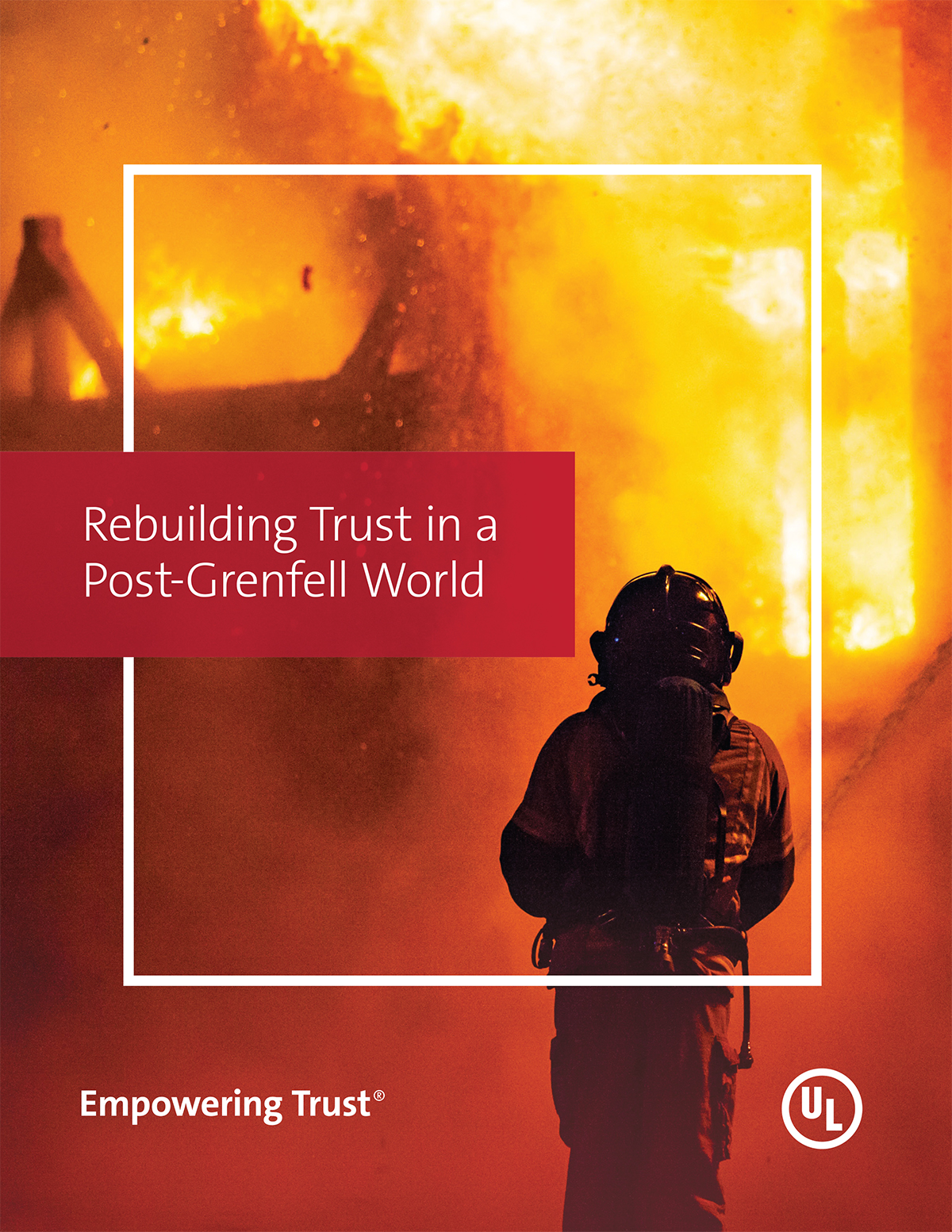The Grenfell Tower tragedy and the findings of subsequent Dame Judith Hackitt’s independent review of building regulations and fire safety, as well as the public inquiry, have resulted in a deep and widespread loss of trust in the construction industry
At least 72 people died and 70 were injured in the fire that engulfed Grenfell tower in the early hours of 14 June 2017, while hundreds lost their homes. How could this happen in 21st century Britain?
The fallout from Grenfell
In this White Paper, UL, a global leader in safety science, looks at how the fallout from the Grenfell disaster shattered trust between tenants and landlords, building owners and contractors, construction companies and the products they use, as well as the testing and certification system meant to provide quality assurance.
It discusses the need for urgent change and reform in building control, fire safety and construction, as well as the scale of the challenge in rebuilding trust and confidence.
This discussion is informed by UL’s roundtable, held in 2019, which brought together six key industry leaders and opinion formers: Jane Duncan, past president of RIBA; Hannah Mansell, group technical director at Masonite and chair of the Passive Fire Protection Forum; Jonathan O’Neill OBE, managing director of the Fire Protection Association; Niall Rowan, CEO of the Association for Specialist Fire Protection; Lorna Stimpson, chief executive of Local Authority Building Control; and Geoff Wilkinson, managing director of Wilkinson Construction Consultants.
Identifying areas that need change
Drawing on their insights and the findings of the Hackitt Review, the White Paper examines what needs to change in areas such as improving industry competence, third-party testing and certification of construction products, and shifting the culture of construction towards greater collaboration rather than competition – and prioritising safety over profit.
In addition, it asks how proposals based on the Hackitt Review’s recommendations will empower residents and give them a real say over decisions relating to the fire and structural safety of their buildings.
While there is no shortage of good intentions from some parts of the industry, progress has been slow and there is still much work to do. There is no silver bullet for building and fire safety but starting to rebuild trust between industry players and those they ultimately serve will be crucial in raising standards for all.



